The Hindenburg (film)
6 /10 1 Votes
40% Rotten Tomatoes Initial DVD release October 27, 1998 Duration Country United States | 6.2/10 IMDb 3.9/5 Amazon Genre Adventure, Drama, History Language English | |||||||||||||||||||||||||||||||||
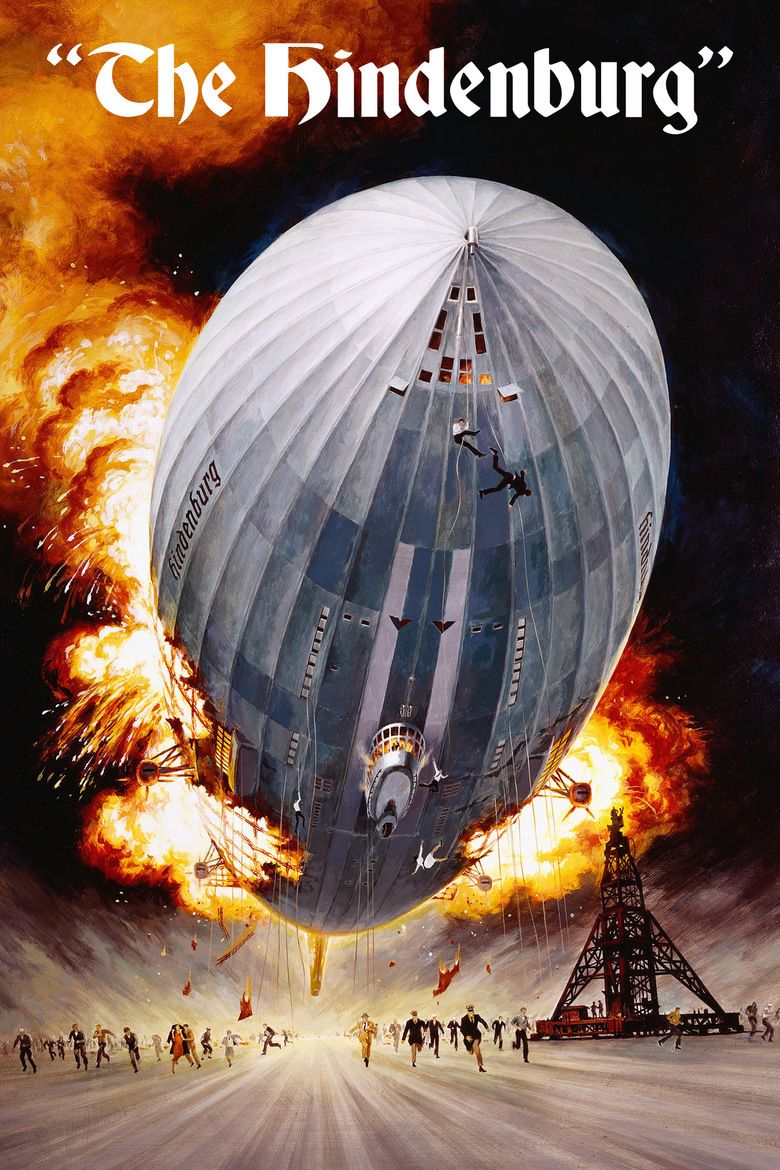 | ||||||||||||||||||||||||||||||||||
Release date December 25, 1975 (1975-12-25) Cast (Col. Franz Ritter), (Ursula), (Boerth), (Martin Vogel), (Edward Douglas), (Emilio Pajetta) Similar movies Blackhat , Mad Max: Fury Road , Jurassic World , San Andreas , John Wick , Furious 7 Tagline The truth at last? What really happened to The Hindenburg? | ||||||||||||||||||||||||||||||||||
The hindenburg theatrical trailer
The Hindenburg is a 1975 American Technicolor film based on the disaster of the German airship Hindenburg. The film stars George C. Scott. It was produced and directed by Robert Wise, and was written by Nelson Gidding, Richard Levinson and William Link, based on the 1972 book of the same name by Michael M. Mooney.
Contents
- The hindenburg theatrical trailer
- The hindenburg 1975 movie clip
- Plot
- Characters
- Cast
- Artistic liberties
- Reception
- Awards
- Home media
- References
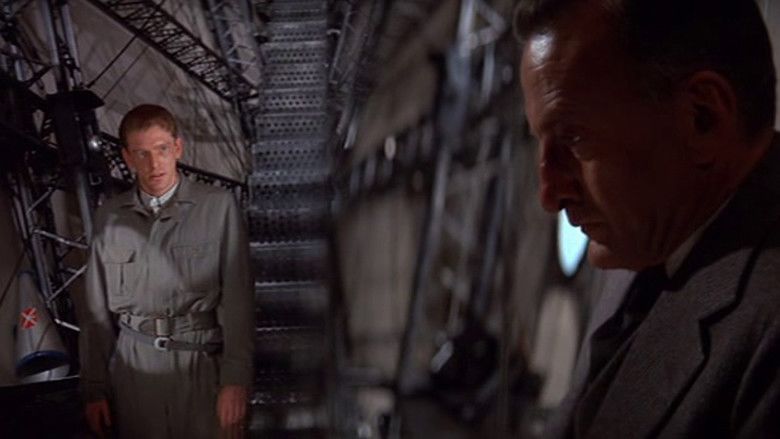
A highly speculative thriller, the film and the book it is based on depict a conspiracy of sabotage leading to the destruction of the airship. In reality, while the Zeppelins were certainly used as a propaganda symbol by the Third Reich, and anti-Nazi forces might have had the motivation for sabotage, the theory of sabotage was investigated at the time, and no firm evidence for such sabotage was ever put forward. A. A. Hoehling, author of the 1962 book Who Destroyed the Hindenburg?, also about the sabotage theory, sued Mooney along with the film developers for copyright infringement as well as unfair competition. However, Judge Charles M. Metzner dismissed his allegations.
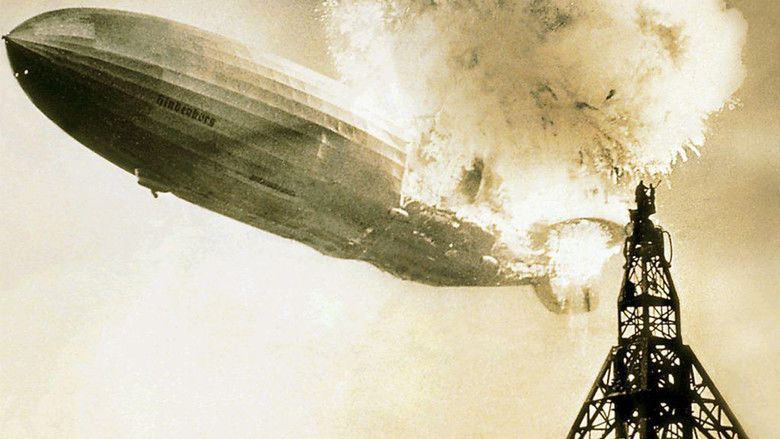
Filmed largely in color (with a mock newsreel presented in black-and-white at the beginning of the film), a portion of the film is presented in monochrome, edited between portions of the historical Hindenburg newsreel footage shot on May 6, 1937.
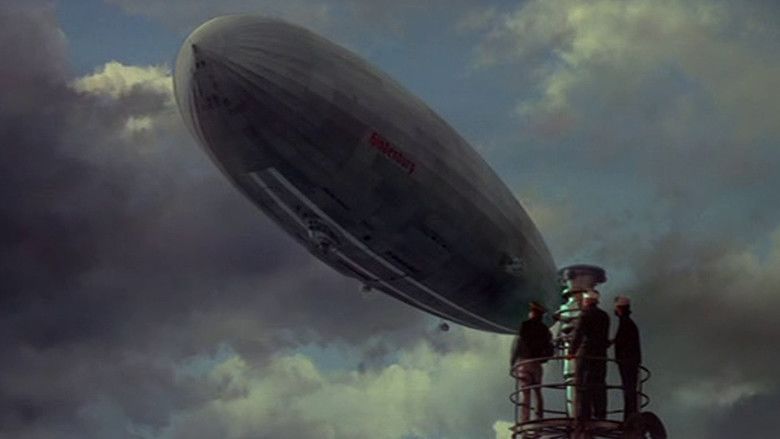
The hindenburg 1975 movie clip
Plot

Kathie Rauch (Ruth Schudson), a psychic from Milwaukee, Wisconsin, sends a letter to the German Embassy in Washington, D.C. claiming the Hindenburg Zeppelin will explode after flying over New York. In the meantime, Luftwaffe Colonel Franz Ritter (George C. Scott) boards with the intention of protecting the Hindenburg as various threats have been made to down the airship, which some see as a symbol of Nazi Germany.
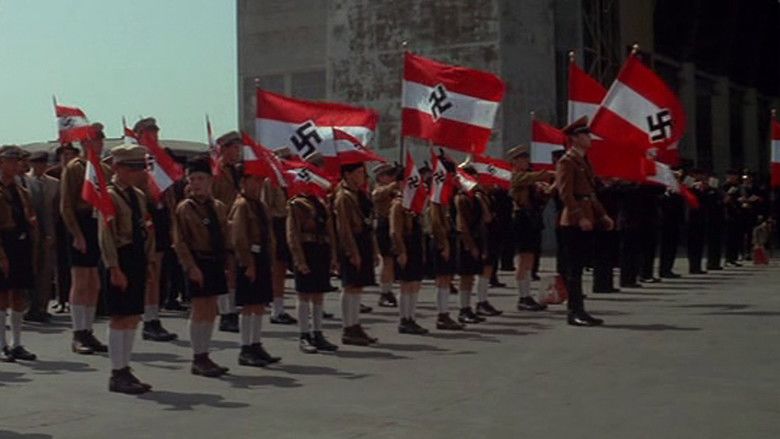
Ritter is assisted by a Nazi government official, SS/Gestapo Hauptsturmführer Martin Vogel (Roy Thinnes), who poses as an "official photographer" of the Hindenburg. However, both operate independently in investigating the background of all passengers and crew on the voyage. Ritter has reason to suspect everyone, even his old friend, Countess Ursula von Reugen (Anne Bancroft), whose Baltic estate in Peenemunde had been taken over by the Nazis and appears to be escaping Germany to visit her daughter in Boston.
Other prime suspects include card sharks Emilio Pajetta (Burgess Meredith) and Major Napier (Rene Auberjonois), Edward Douglas (Gig Young), a suspicious German-American ad executive, as well as several crew members and even the Hindenburg captains Pruss (Charles Durning) and Lehmann (Richard A. Dysart). Many possible clues turn out to be red herrings, such as acrobat Joe Spah (Robert Clary) sketching the ship's interior as an idea for a Vaudeville show and mysterious names which later turned out to be the name of race horses on board the Queen Mary (where Douglas' competitor is travelling).
Across the Atlantic, the flight slowed down by thunderstorms as well as a rip in the fabric of the upper port tail fin. Hiding from Ritter, the rigger Karl Boerth (William Atherton) tripped on a cable, causing the rip. The next day, the riggers Boerth and Ludwig Knorr (Ted Gehring) are sent outside the fin to repair the damage. Boerth nearly falls overboard when the ship loses altitude and Captain Pruss makes the decision to increase speed and altitude. Boerth is then pulled back into the ship by Knorr. In Germany, Boerth's girlfriend, Freda Halle (Lisa Pera), who was rumored to work for foreigners and having anti-Nazi affiliations, is arrested by the Gestapo. Although Captain Lehmann is relieved by the news of Mrs. Rauch's letter being a crank, both Ritter and Vogel soon suspect Boerth is the saboteur.
Ritter attempts to arrest Boerth but he resists and requests help from Ritter, who sympathizes with him because Ritter's son was killed in an accident a year before while in the Hitler Youth. Ritter later receives news that Halle was killed by the Gestapo while trying to escape arrest as the Hindenburg crossed the Atlantic. Boerth, upon hearing the news of Halle's death, plans to commit suicide by staying alone aboard the airship as the bomb goes off, to show that there is a resistance against the Nazi party. Boerth insists an explosion in flight with others aboard is the "last thing I want", and Ritter reluctantly agrees with Boerth to set the bomb to 7:30, when the airship should have landed and passengers disembarked.
While setting up the bomb, Boerth drops the knife part which is recovered by rigger Ludecke. To cover up the loss of his knife, Boerth steals a knife from fellow rigger Ludwig Knorr. Vogel starts to work behind Ritter's back, arresting Boerth and confiscating the Countess's passport.
As the airship approaches Lakehurst Naval Air Station at 7:00, Ritter realizes the bomb will explode before the ship can land and searches for Boerth to ask where the bomb is. Vogel is caught by Ritter in the cargo bay interrogating Boerth and fights Ritter only to be knocked unconscious. An injured Boerth tells Ritter the bomb is in the repair patch of gas cell 4. Ritter attempts to defuse the bomb, but is unable to do so in time after being distracted by a now-awakened Vogel. The bomb explodes, killing Ritter instantly and sending Vogel flying down the walkway. The resulting explosion sets the airship ablaze. The film transitions to monochrome as passengers and crew struggle to survive the fire, set alongside the actual newsreel footage of the disaster. Vogel survives, being carried by ground crewmen. Boerth was injured from being tortured by Vogel and later dies of his burns, but manages to set the Channing's dog free before the ship crashes to the ground. The Countess survives the fire by walking down the gangway stairs and reunites with her daughter. The final scene of the disaster shows a burnt piece of fabric among the wreckage that was painted with the ship's name.
The following day, with the fire cleared, a list of some of the passengers and crew who died or survived is described briefly as well as the common theories of the disaster. The wreckage is examined for the inquiry before being cleaned up. The film transitions back to colour, with Herbert Morrison's memorable radio commentary played back, and the Hindenburg is seen flying once again, only to disappear into the clouds before the closing credits are shown.
Characters
Cast
Many of the fictional characters are based on actual people. For example: Franz Ritter is based on Fritz Erdmann, Karl Boerth is based on Eric Spehl, as well as a few others.
(*) Beside name indicates actual historical person
Artistic liberties
Although the film is largely accurate to its setting, there were numerous differences between the film and reality. Some aspects were added for dramatic purposes. The scene when the port fin's fabric rips did not happen to the Hindenburg, but a similar event happened to the Graf Zeppelin during its first flight to America. Additionally, although the Hindenburg did have a Blüthner baby grand piano aboard for the 1936 season, it was not aboard the final flight in 1937. While the interior of the ship was accurately recreated, a stairway was added to the lower fin for dramatic purposes; in the real Hindenburg, there was just a ladder for crew members to walk down. Several aspects of the airship's takeoff and landing procedures were also inaccurate. The mooring mast used in the landing sequence is black, while the real mooring mast was red and white. During the landing sequence the ship drops water ballast through windows near the nose instead of at the tail section, as it did during the final approach.
A few anachronisms occur as well: At the beginning of the story, two senior Luftwaffe Generals discuss the possibility of Colonel Franz Ritter receiving the Knight's Cross of the Iron Cross for actions in the Spanish Civil War. The Knight's Cross did not exist in 1937 (when the film is set), first being created at the start of World War II in 1939. Also, at one time Edward Douglas refers to the fact that the German car manufacturer Opel is to be taken over by General Motors "the next day." In fact, Opel had already been taken over completely in 1931. At Berlin there are Citroën HY delivery cars which were built in the late 1940s.
Several dramatic escapes depicted were based on fact, slightly altered for dramatic purposes, including:
Reception
Although well received by the public as typical "disaster movie" fare, critical reception to The Hindenburg was generally unfavorable. Roger Ebert from the Chicago Sun-Times dismissed it as a failed project, "The Hindenburg is a disaster picture, all right. How else can you describe a movie that cost $12 million and makes people laugh out loud at all the wrong times?" Frank Rich, in his year-end review of films released that year, named The Hindenburg the year's worst disaster film, stating, "The hero is a Nazi and the special effects couldn't fool Gerald Ford." Similar reactions were recounted, and when the film eventually made it to television screens, the TV Guide summed up a near-universal review: "This insipid, boring, implausible, senseless, deliciously funny, and expensively mounted film... There's no tension whatsoever and none of the characters is remotely interesting, let alone sympathetic." Pauline Kael voiced her disapproval of the film and Wise's direction with the phrase, "One gasbag meets another.". On the review Aggregator website Rotten Tomatoes the film currently holds a score of 40% rotten.
Awards
Despite critical reaction, The Hindenburg was noteworthy for its use of special effects and won two Special Achievement Academy Awards in 1976:
The film was also nominated for Best Art Direction (Art Direction: Edward Carfagno; Set Decoration: Frank McKelvy), Best Cinematography and Best Sound (Leonard Peterson, John A. Bolger, Jr., John L. Mack and Don Sharpless).
In the same year, The Hindenburg was nominated for an "Eddie" in the category of Best Edited Feature Film in the American Cinema Editors Awards.
Home media
The Hindenburg has been released on a number of home video formats, including VHS, Betamax, Laser Disc, and DVD. On February 7, 2017, the film was released on Blu-ray in a bare bones edition as a Wal-Mart exclusive, and a wide release followed on May 2, 2017.
References
The Hindenburg (film) WikipediaThe Hindenburg (1975 film) IMDbThe Hindenburg (1975 film) Rotten TomatoesThe Hindenburg (1975 film) Amazon.comThe Hindenburg (film) themoviedb.org
